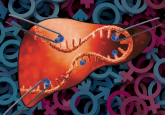Revealing the mystery behind sex differences in disease

New transcriptome results promise to help shed light on the biology underlying sex differences in disease.
The final phase of the Genotype-Tissue Expression (GTEx) Consortium has been unveiled in a recent issue of Science, revealing important insights into sex differences in gene expression. The results also have far-reaching implications for study design.
GTEx began over a decade ago, seeking to investigate the effects of DNA variation on gene expression in humans. The consortium’s efforts have since led to a number of insights and new research tools.
Their latest data release includes more tissues and more individuals, enabling the detection of sex-specific differences.
 Long live the women: study uncovers an explanation for the lifespan gap between sexes
Long live the women: study uncovers an explanation for the lifespan gap between sexes
New research has suggested that having two copies of the same sex chromosome offers protection and consequentially leads to a longer lifespan.
It is well-known that the sexes do not only differ in outward appearance – their differential gene expression also affects the risk of various diseases, as well as disease incidence, prevalence, age-of-onset and so on. This includes cancer, autoimmune disorders and cardiovascular disease, among others. However, we understand very little about the biology underlying these differences.
A new analysis of GTEx data, led by Meritxell Oliva et al. (University of Chicago, IL, USA), demonstrates that 37% of genes exhibit sex-biased expression in at least one of 44 tissues analyzed, including the liver, heart and brain. What’s more, they observed sex-specific variation in cellular composition across tissues. While the effects were small, they were genome-wide, with 13,294 sex-biased genes across all tissues, and involved in a broad range of biological functions.
This study not only lays the groundwork for understanding male- and female-based disease and developing new therapeutics – it also highlights that future research using both male and female samples needs to be carefully planned to avoid skewed results. What’s more, these results further highlight the need to revisit historical results from studies using primarily white male subjects, and the need for more representative data – GTEx itself acknowledges its samples are two-thirds male and nearly 85% are from those of European descent.



